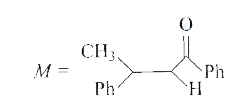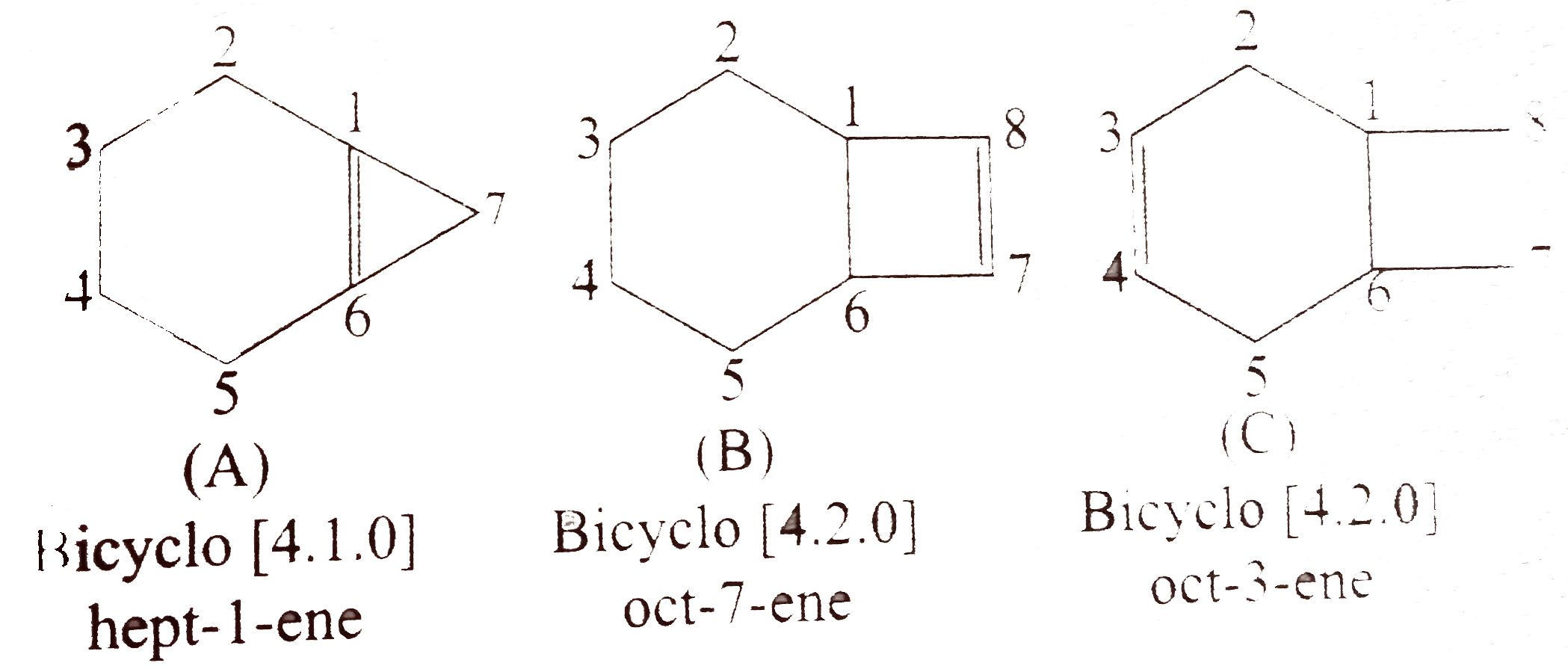An organic compound (A) C4H9Cl on reacting with aqueous KOH gives (B) and on reaction with alcoholic KOH gives (C ), which is also formed on passing the vapours of (B) over the heated copper. The compound (C ) readily decolourises bromine water. Ozonolysis of (C ) gives two compounds (D) and (E ). Compound (D) reacts with NH2OH to give (F) and compound (E ) reacts with NaOH to have an alcohol (G) and sodium salt (H) of an acid. (D) can also be prepared form propyne on treatment with water in the presence of Hg2+ and H2SO4. Identify (A) to (H) with proper reasoning.
To solve the problem step by step, we need to identify each compound (A to H) based on the given reactions and properties. Let's break it down:
Step 1: Identify Compound A
- Given: Compound A has the formula C4H9Cl.
- Analysis: The degree of unsaturation (double bond equivalent) can be calculated as follows:
\(
\text{DBE} = \frac{C - H + X + N}{2} = \frac{4 - 9 + 1 + 0}{2} = 0
\)
This indicates that there are no double bonds or rings in compound A. Therefore, compound A is likely a saturated alkyl chloride.
- Possible Structure: The most likely structure for A is 1-chlorobutane (C3H7Cl).
Step 2: Identify Compound B
- Reaction with Aqueous KOH: When A reacts with aqueous KOH, it undergoes hydrolysis to form an alcohol.
- Expected Product: The product B is likely butanol (C4H9OH).
Step 3: Identify Compound C
- Reaction with Alcoholic KOH: When A reacts with alcoholic KOH, it undergoes elimination to form an alkene.
- Expected Product: The product C is likely butene (C4H8), which can be either 1-butene or 2-butene.
Step 4: Properties of Compound C
- Decolorization of Bromine Water: Since C can decolorize bromine water, it confirms that C is an alkene (unsaturated).
- Formation from B: When passing the vapors of B (butanol) over heated copper, it can also yield the same alkene C (butene).
Step 5: Ozonolysis of Compound C
- Ozonolysis Reaction: The ozonolysis of butene (C) will yield two products D and E.
- Expected Products: The ozonolysis of 2-butene will yield:
- D: Acetone (C3H6O)
- E: Acetaldehyde (C2H4O)
Step 6: Identify Compound D and E
- Compound D: Acetone (C3H6O) reacts with hydroxylamine (NH2OH) to form an oxime (F).
- Compound E: Acetaldehyde (C2H4O) reacts with NaOH to yield an alcohol (G) and sodium acetate (H).
Step 7: Identify Compounds F, G, and H
- Compound F: The oxime formed from acetone is acetone oxime (C3H7NO).
- Compound G: The alcohol formed from acetaldehyde is ethanol (C2H5OH).
- Compound H: The sodium salt of the acid formed from acetaldehyde is sodium acetate (CH3COONa).
Step 8: Summary of Compounds
- A: 1-chlorobutane (C4H9Cl)
- B: Butanol (C4H9OH)
- C: Butene (C4H8)
- D: Acetone (C3H6O)
- E: Acetaldehyde (C2H4O)
- F: Acetone oxime (C3H7NO)
- G: Ethanol (C2H5OH)
- H: Sodium acetate (CH3COONa)
Final Answer
- A: 1-chlorobutane
- B: Butanol
- C: Butene
- D: Acetone
- E: Acetaldehyde
- F: Acetone oxime
- G: Ethanol
- H: Sodium acetate
- Given: Compound A has the formula C4H9Cl.
- Analysis: The degree of unsaturation (double bond equivalent) can be calculated as follows:
\(
\text{DBE} = \frac{C - H + X + N}{2} = \frac{4 - 9 + 1 + 0}{2} = 0
\)
This indicates that there are no double bonds or rings in compound A. Therefore, compound A is likely a saturated alkyl chloride.
- Possible Structure: The most likely structure for A is 1-chlorobutane (C3H7Cl).
- Reaction with Aqueous KOH: When A reacts with aqueous KOH, it undergoes hydrolysis to form an alcohol.
- Expected Product: The product B is likely butanol (C4H9OH).
- Reaction with Alcoholic KOH: When A reacts with alcoholic KOH, it undergoes elimination to form an alkene.
- Expected Product: The product C is likely butene (C4H8), which can be either 1-butene or 2-butene.
- Decolorization of Bromine Water: Since C can decolorize bromine water, it confirms that C is an alkene (unsaturated).
- Formation from B: When passing the vapors of B (butanol) over heated copper, it can also yield the same alkene C (butene).
- Ozonolysis Reaction: The ozonolysis of butene (C) will yield two products D and E.
- Expected Products: The ozonolysis of 2-butene will yield:
- D: Acetone (C3H6O)
- E: Acetaldehyde (C2H4O)
- Compound D: Acetone (C3H6O) reacts with hydroxylamine (NH2OH) to form an oxime (F).
- Compound E: Acetaldehyde (C2H4O) reacts with NaOH to yield an alcohol (G) and sodium acetate (H).
- Compound F: The oxime formed from acetone is acetone oxime (C3H7NO).
- Compound G: The alcohol formed from acetaldehyde is ethanol (C2H5OH).
- Compound H: The sodium salt of the acid formed from acetaldehyde is sodium acetate (CH3COONa).
- A: 1-chlorobutane (C4H9Cl)
- B: Butanol (C4H9OH)
- C: Butene (C4H8)
- D: Acetone (C3H6O)
- E: Acetaldehyde (C2H4O)
- F: Acetone oxime (C3H7NO)
- G: Ethanol (C2H5OH)
- H: Sodium acetate (CH3COONa)
- A: 1-chlorobutane
- B: Butanol
- C: Butene
- D: Acetone
- E: Acetaldehyde
- F: Acetone oxime
- G: Ethanol
- H: Sodium acetate
Topper's Solved these Questions
- ALIPHATIC AND AROMATIC ALDEHYDES AND KETONESBOOK - CENGAGE CHEMISTRY ENGLISHCHAPTER - ALIPHATIC AND AROMATIC ALDEHYDES AND KETONESEXERCISE - Exercises Concept Application
20 Videos
- ALIPHATIC AND AROMATIC ALDEHYDES AND KETONESBOOK - CENGAGE CHEMISTRY ENGLISHCHAPTER - ALIPHATIC AND AROMATIC ALDEHYDES AND KETONESEXERCISE - Exercises Linked Comprehension
59 Videos
- ALIPHATIC AND AROMATIC ALDEHYDES AND KETONESBOOK - CENGAGE CHEMISTRY ENGLISHCHAPTER - ALIPHATIC AND AROMATIC ALDEHYDES AND KETONESEXERCISE - Solved Examples
13 Videos
- ALCOHOL,PHENOL AND ETHERSBOOK - CENGAGE CHEMISTRY ENGLISHCHAPTER - ALCOHOL,PHENOL AND ETHERSEXERCISE - Archives Analytical And Descriptive
15 Videos
- APPENDIX INORGANIC VOLUME 2BOOK - CENGAGE CHEMISTRY ENGLISHCHAPTER - APPENDIX INORGANIC VOLUME 2EXERCISE - Short Answer Type
179 Videos
Similar Questions
When an inorganic compound reacts with SO2 in aqueous medium produces (A).(A) on reaction with Na2CO3 gives the compound (B) which with sulphur gives a substance (C) used in photography. The compound (C) is.
View SolutionA tertiary alcohol (H) upon acid-catalysed dehydration gives a product (I). Ozonolysis of (I) leads to compounds (J) and (K). Compound (J) upon reaction with KOH gives benzyl alcohol and a compound (L), whereas (K) on reaction with KOH gives only (M).

Compound (H) is formed by the reaction of:
View Solution
Knowledge Check
A tertiary alcohol H upon acid catalysed dehydration gives a product I. Ozonolysis of I leads to compound J and K. Compound J upon reaction with KOH gives benzyl alcohol and a compound L, whereas K on reaction with KOH gives only M.

Compound H is formed by the reaction of :A B
B C
C D
D
A tertiary alcohol (H) upon acid-catalysed dehydration gives a product (I). Ozonolysis of (I) leads to compounds (J) and (K). Compound (J) upon reaction with KOH gives benzyl alcohol and a compound (L), whereas (K) on reaction with KOH gives only (M).

Compound (H) is formed by the reaction of:
View SolutionA tertiary alcohol (H) upon acid-catalysed dehydration gives a product (I). Ozonolysis of (I) leads to compounds (J) and (K). Compound (J) upon reaction with KOH gives benzyl alcohol and a compound (L), whereas (K) on reaction with KOH gives only (M).

Compound (H) is formed by the reaction of:
View SolutionA compound 'A' when reacts with LiAlH4 it gives two compounds B and C along with LiCl. Compounds A, B and C respectively are
View SolutionThe three compounds (A),(B),and (C) on hydrogenation with H2+Pd give (D),(E) and (F), respectively.

Compounds (D),(E) and (F) are :
View SolutionA compound (A) is formed by the reaction of ethylene with bromine which on reacting with aqueous KOH gives a compound (B). The compound (B) can also be prepared by the reaction of ethylene with the following:
View SolutionAn orgainc compound A upon reacting with NH3 gives B On heating B give C.C in presence KOH reacts with Br2 to yield CH3CH2NH2A is .
View SolutionAn orgainc compound A upon reacting with NH3 gives B On heating B give C.C in presence KOH reacts with Br2 to yield CH3CH2NH2A is .
View Solution
